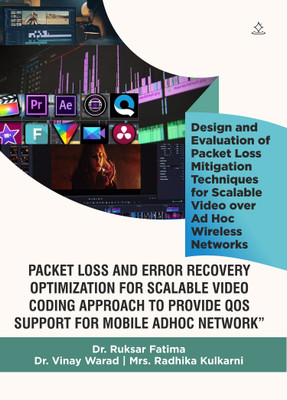PACKET LOSS AND ERROR RECOVERY OPTIMIZATION FOR SCALABLE VIDEO CODING APPROACH TO PROVIDE QOS SUPPORT FOR MOBILE ADHOC NETWORK - Design and Evaluation of Packet Loss Mitigation Techniques for Scalable Video over Ad Hoc Wireless Networks(Paperback, Dr. Ruksar Fatima, Dr. Vinay Warad, Mrs. Radhika Kul
Quick Overview
Product Price Comparison
"Packet Loss and Error Recovery Optimization for Scalable Video Coding Approach to Provide QoS Support for Mobile Ad Hoc Networks" presents a cutting-edge solution to one of the most pressing challenges in wireless multimedia communication: how to maintain high-quality video streaming over unreliable and resource-constrained mobile ad hoc networks (MANETs). At the heart of this book is a novel framework that integrates Scalable Video Coding (SVC) with visual saliency detection to deliver adaptive, QoS-aware video transmission. Rather than treating all parts of a video equally, this approach intelligently identifies and prioritizes the most visually important regions ŌĆö those that human viewers focus on most ŌĆö enabling efficient bandwidth use and improved video quality under varying network conditions. The book introduces two complementary sets of visual saliency techniques: Contrast-based saliency mapping, which captures motion and color contrasts using spatio-temporal gradients. Model-based techniques, including Dynamic Local Orientation Cues (DLOC) and Markov Random Fields (MRF), to enforce spatial coherence and detect subtle yet salient features. By fusing spatial, temporal, and semantic cues, the framework creates robust saliency maps that guide scalable video encoding, transmission, and error recovery. These techniques are particularly effective in dynamic, multi-hop environments like MANETs, where packet loss, latency, and network instability are common. Through detailed theoretical foundations, algorithmic insights, and performance evaluations using simulation tools, this book equips readers with the knowledge and practical techniques to build more resilient, intelligent video delivery systems.

